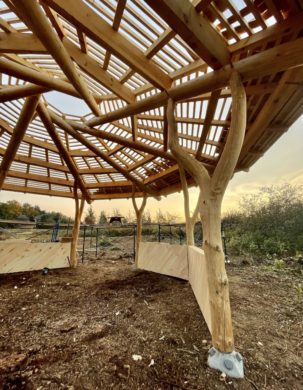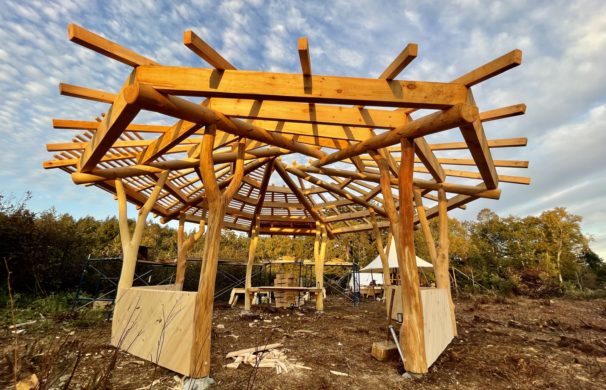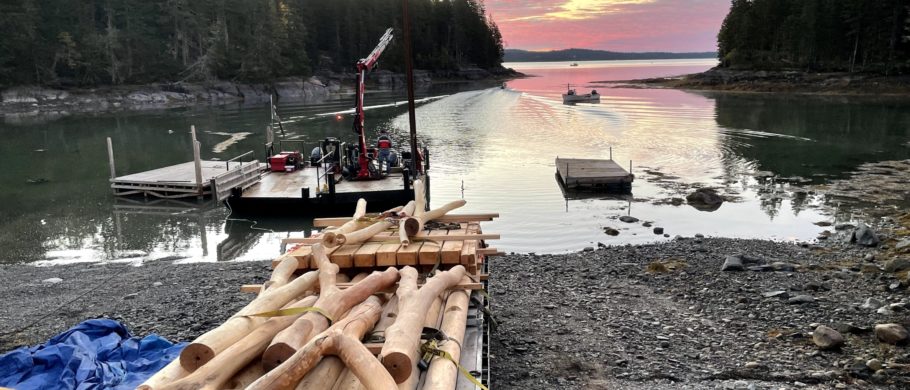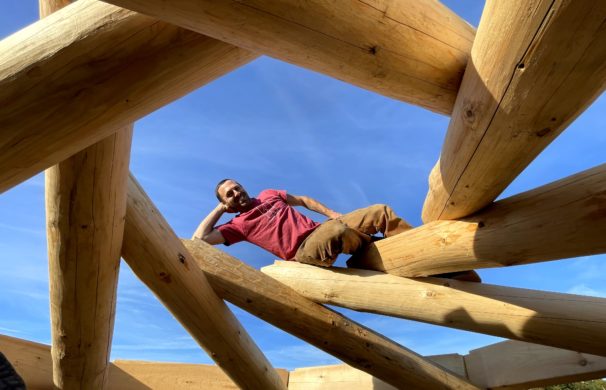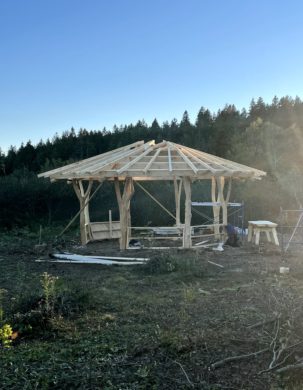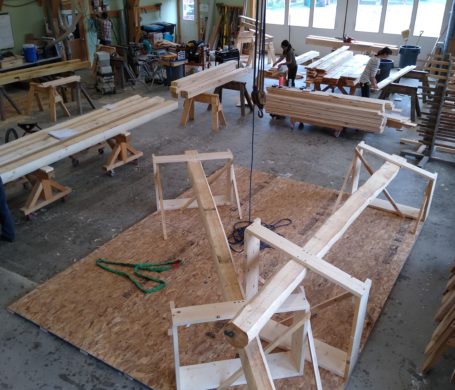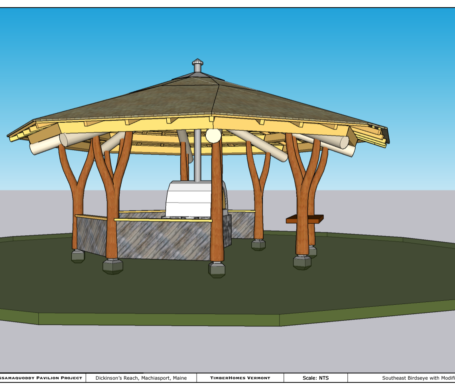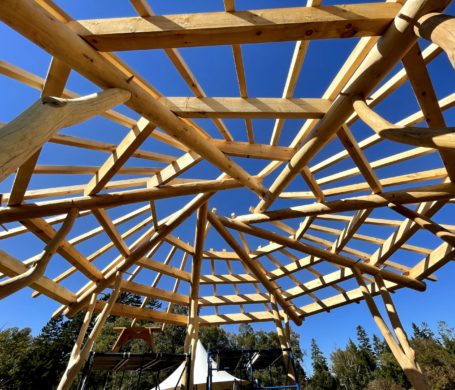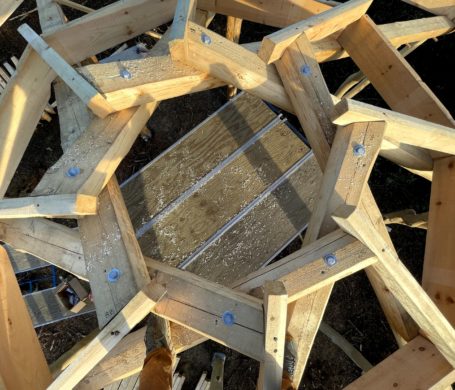This post is about an eight sided timber pavilion built for a Maine retreat center, former homestead of legendary architect and thinker Bill Copperthwaite. The Passamaquoddy tribe is indigenous to this area, and this pavilion was erected in large part as a monument to invite indigenous access and stewardship back to this special place. The following text is adapted from Ariel’s story of his involvement with the project.
My time out on Passamaquoddy land in Downeast Maine was very potent and spiritually uplifting, which came as a bit of a surprise. This was probably the most unique and special experience I’ve ever had at TimberHomes and it’s hard to decide what to share about it!
This pavilion was erected as a symbolic offering, as part of the larger movement of giving land back to indigenous stewardship. This land has been placed under conservation so it cannot be developed, and it has been opened to indigenous access in perpetuity with a legal mechanism that is written into the conservation. The idea of this pavilion was to build a structure with no walls and no doors, with a stone oven inside, which is welcome for all people to gather in and enjoy. There were several Passamaquoddy people who were present at the raising and during the oven construction which I was not there to see.
The tides were one of the most incredible parts of this experience. This location is on a peninsula which wraps itself around a “tidal pond,” meaning there is a narrow ocean inlet that fills a pond with seawater. Since the inlet (called a “tidal rip”) is narrow, when the tide is rising, seawater is rushing in (think whitewater rapids) to fill the pond. When the tide is dropping, water rushes out and the pond is left a whopping ~15′ lower in elevation!
What this meant for our mobilization is that we loaded up an ocean barge (which had a crane…literally on it) with all our stuff, plus a bunch of other construction materials for the oven, at 6am so that we could be sure to enter the tide rip as high tide was approaching. Very important as it is impossible to boat against the current in that little inlet. Then we had a very specific time frame to unload because the barge would get beached if we took too long. It was all a very hectic and fast paced morning with maybe 10 volunteers hand carrying everything they could while the crane focused on the big lifts.
We carried all 10,000 pounds of THVT materials up a 100 yard uphill path to the building site and with Josh’s meticulous planning and raising script, we were able to raise the structure and complete THVT’s scope in about 3.5 days. There were about a dozen volunteers out there, and a camp chef, and we shared a great deal of stories, laughter, and had an all around magnificent time erecting this beautiful monument and staying up by the fire at night. This place was utterly magical and uplifting and it was such an honor to play the role that I did in all this. I’ll end with a poem that was burned into a slat of wood resting beside Bill Coperthwaite’s bed in his magnificent 4-decker UFO yurt…
The Crooked Path, by H Bryan
Roads now run straight,
Their ups and downs
Are dug and filled
To smooth the way
The curves are eased
As are the sounds
That helped to bind
us to the day.
We shut the door
Exlude the breeze
The norm is now
conditioned air
In soft encapsulated
Cushioned ease
now we’re here
In moments, there.
But someone walks
along a road
Who sees the value
of the turn
The pleasant task
The heavy load
Are his delight
And [her] concern
He knows that contrast
found in life
is one of nature’s
basic rules
[She] fears not hardship
conquers strife
With honest work
And honest tools.
Reciprocating Roofs: A Deeper Look
Reciprocating roofs are an unusual structural form that allows for large clearspans, and creates a braiding effect in the roof. There is no central post in a reciprocal roofed structure. This pavilion frame has eight forked posts that each carry a log rafter. Each rafter rises towards the central aperture, rests on its first neighbor, and carries the next. This design was based on a larger, twelve sided reciprocating roof pavilion we built for a summer camp in 2014. To read more about reciprocal pavilions, and see photos of the finished twelve-sided version, see our page on the Flying Cloud Pavilion.
